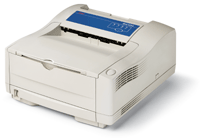Once included in the same ironic phrasing as 'jumbo shrimp,' the term 'bargain laser printer' is no longer a self-contradiction. Nor is it limited to just black and white.Maturing technology'desktop lasers have been around for 21 years'and high sales volumes have put lasers into a near-commodity category. Even if $149 is not a trivial amount, it's not the $3,495 Hewlett-Packard Co. asked for (and got) in 1984 for its first LaserJet.But the greatest revolution this year might well be in color laser printing. At least two makers'HP and South Korean conglomerate Samsung'are offering $399 color lasers, a price 60 percent below the first sub-$1,000 color lasers introduced three or four years ago.For small workgroups and remote offices, this kind of pricing puts laser-based color within the reach of many more users and brings more sellers into the color laser market.'We see players in color that we don't see on the mono side,' said Stuart Foerster, HP's category business manager for color LaserJets. This, he said, comes on the heels of triple-digit, year-after-year growth in the color laser market segment.He added that, in part because of this new pricing, 'color lasers are doing things and going places where they have not historically gone.'Not to be outdone, Samsung Electronics America's CLP-510, introduced in January at $399, features a duplex printing mode that prints on both sides of the paper, a boon in many situations, said Chanel O'Connor, senior product marketing manager at the company's offices in Irvine, Calif.Lower prices for both color and monochrome laser printers will put pressure on other segments of the printer market.Monochrome units will feel the pinch from color lasers, acknowledged Cheryl Carruth, HP's category business manager for monochrome lasers.'[The $399 color laser] product is going to be a challenge to the monochrome,' she said. As a company, she added, 'we want customers to be enabled with color and the mono [laser] business is going to have to deal with that.'Samsung's O'Connor, on the other hand, says that low-cost monochrome lasers represent a compelling bargain for government buyers.'With tight [government] budgets these days, having a very affordable entry-level-priced product is just a great value for what you're actually getting,' she said.While bargain prices for lasers may give ink-jet printers some competition, no one is counting ink-jets out'yet. But market watchers see the downward price progression of 'higher' technologies such as lasers as a plus for users.If the $149 you once spent for an ink-jet will buy a laser, and if the $399 for a high-quality mono laser now buys desktop laser color, then so much the better for the consumer.[IMGCAP(2)]Other market forces are also at work in the printer business, observers say. Some makers, such as Samsung, are going beyond Windows to include Linux compatibility in their low-end machines, while all of HP's models have Microsoft Windows and Apple Macintosh capability. HP reserves Linux drivers for higher-end workgroup units that are more likely to be shared by clusters of Linux users, Carruth said.Samsung and HP are among the makers offering lower-priced toner cartridges for their bargain monochrome units than in previous years, somewhat obviating the old razor-and-blades philosophy: Sell the printer'ink-jet or laser'at a reasonable price, and then make profits on the back end with higher-cost consumables. (HP, among others, also offers higher-capacity toner cartridges for cost-per-page savings and to reduce the number of times a cartridge has to be changed and recycled.)And rather than being a catch-all for aging, end-of-cycle products, the bargain area is seeing new technology arrive.Samsung soon plans to launch a new low-end laser, the ML-2020, which ups the pages-per-minute speed to 21 from 17 for the former model.The LaserJet 2600'the $399 color laser from HP'includes Ethernet connectivity out of the box and in-line laser technology, which prints all four colors at the same time.The other color laser technology'in which each color is applied in a separate pass inside the printer'tended to cut page-per-minute speed by 75 percent, Foerster said, reducing a 16-ppm mono speed to 4 ppm in color.The in-line method gives the LaserJet 2600 an 8-ppm speed for both monochrome and color printing, he said.Carruth, claiming no laser printer is a bargain if it's unreliable, said users should also consider time-to-first-page speeds in evaluating lasers, even at the bargain end of the scale.'We have an instant-on fuser that will get the first page out in exactly the same time, whether the printer is hot or cold,' Carruth asserted. 'And we get the first page out in less than 10 seconds.'He also cautioned against users buying too cheap a printer for their needs, stating that small workgroup printers are often a better purchase.What does the future hold for low-cost lasers? More features and performance, as noted, but also increased value and versatility in products such as color lasers, Foerster said.Samsung's O'Connor, while planning more monochrome printers, is also lining up behind color lasers: 'There's still room for all types of products, but [there's also] a shift in terms of market size and where the dominant category is going to be.'O'Connor believes there is always going to be a group of users comfortable with black-and-white documents.But, she added, 'Color is the category everyone is watching.'
This Infoprint 1412 laser printer from IBM Corp. prints 22 pages per minute and offers 1,200- by 1,200-dpi resolution.
Oki Data's B4100 monochrome laser printer, priced at $168, prints 19 pages per minute.








